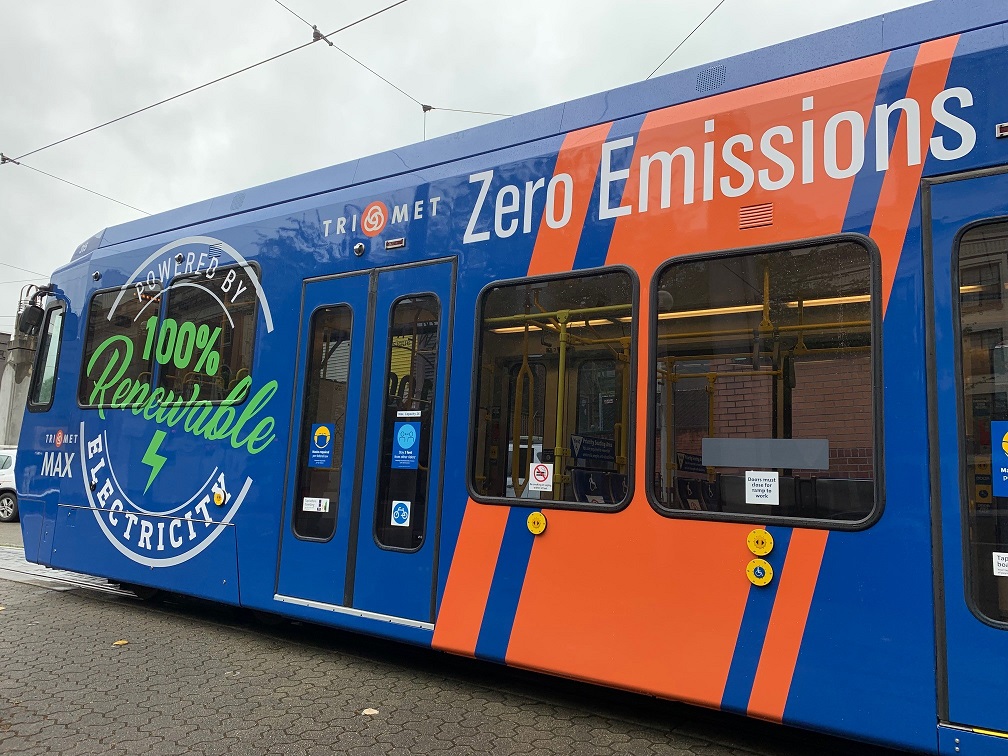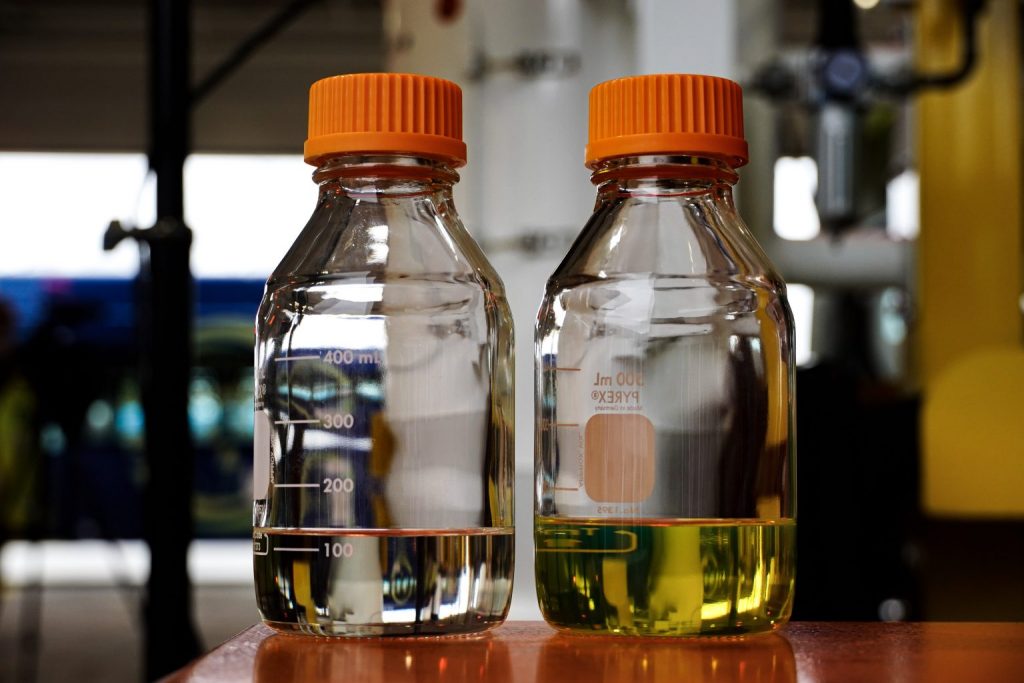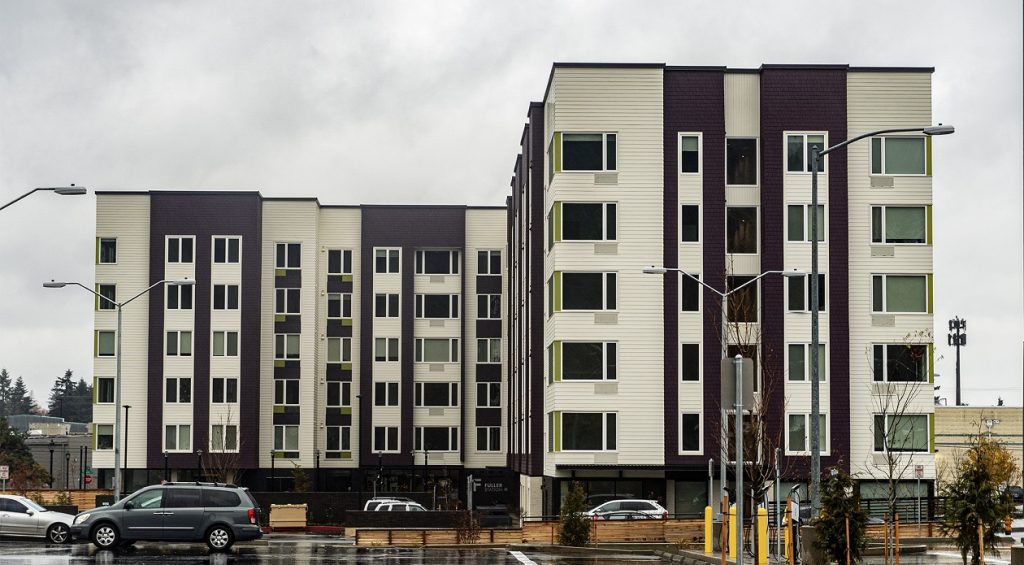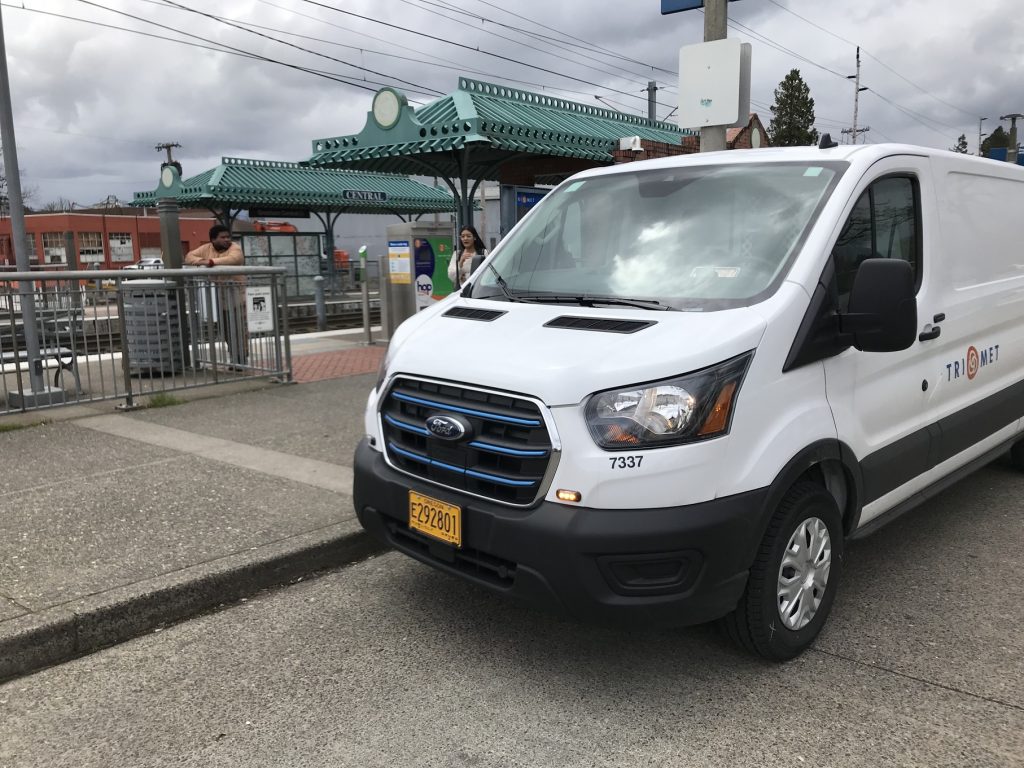A look at five ways TriMet is taking climate action
TriMet’s middle name might as well be “climate-friendly.” Being green is part of our culture, but with the effects of climate change being felt every year, we know we can do more in reducing our pollution while providing a low-carbon travel option for people all across our corner of Oregon.
In the long term, we’ve set the goal of cutting our emissions to net zero by 2050. In the Portland metro area, the entire transportation sector is the largest contributor to the region’s carbon emissions. Every time someone gets on a bus or taps their Hop card before boarding a MAX or WES train, a potential single-occupancy car trip is avoided, congestion on our roads lessens, and our air quality improves. For more than fifty years, TriMet’s service has allowed Portlanders to seek alternatives to driving, or even owning a vehicle in the first place.
We want to encourage more people to use TriMet in navigating our region. The key to this is providing better service to more of the places people need to go. Here are five ways we’re reducing the carbon footprint for the Portland region.
Forward Together towards lower emissions
TriMet is working to expand our bus service by more than 30% in the next few years, which would bring service to 50,000 more people on weekdays and expand weekend service to 100,000 more people as well. We’re moving some of our bus routes, adding lines, and changing our schedules to increase ridership and better meet the needs of people with lower incomes who rely on transit. This year, we start to roll out the first of our Forward Together service improvements.
We’ll be adding buses on some routes to bring them into our Frequent Service network, providing customers with a ride every 15 minutes throughout the day. That will make it more convenient for people to ride. Our Forward Together plan also includes some minor route changes to help people better access large employment centers and our MAX system.

Powered by clean energy
TriMet’s “Type 1” MAX trains have been through it all, and just last year MAX Train 120 hit the 2 million mile mark. What’s powered it these past two years, and all our MAX trains, is renewable electricity. All TriMet-owned facilities run on renewable electricity as well.
By switching to renewable electricity in 2021, we reduced our carbon emissions by more than 25%. That’s the equivalent of taking more than 5,200 cars off the road and means 53 million fewer pounds of greenhouse gases are emitted into the atmosphere every year.
As we look forward, buses that are part of our first bulk purchase of electric buses will begin arriving late this year – and they too will run on renewable electricity! Those 24 electric buses will help our transition from a diesel bus fleet to a zero-emissions bus fleet by 2040.
These buses run on what? How food waste keeps TriMet rolling
If you boarded a bus after eating French fries, you and your bus are kind of being powered by the same fuel source. TriMet buses run on renewable diesel, which is made up of sustainable organic matter such as natural fats, vegetable oil and greases, which are things you might find at the bottom of a kitchen fryer. We made this switch to the cleaner-burning fuel in December 2021, and it lowers our bus fleet’s greenhouse emissions by 61% compared to the diesel blend we had been using.

Renewable diesel, known as “R99”, is a cleaner-burning, low-carbon fuel that powers our diesel buses and LIFT vehicles, as well as our WES trains. “R99” gets its name because it’s derived from 99% renewable sources but is chemically identical to regular diesel.
Not just how we move, but where we live: TriMet investments create sustainable communities
Our Transit-Oriented Development team works with community partners to make the most efficient land use around our MAX stations and transit centers, with affordable housing, community facilities, and commercial facilities that encourage sustainable growth.

The Fuller Station Apartments recently opened up in Happy Valley along the MAX Green Line and Line 72-Killingsworth. The six-story building features 100 apartments that quickly filled up, providing housing for families and individuals who earn between 30% and 60% of the area median income. The apartments were built on an underused portion of a TriMet Park & Ride and was made possible, in part, by funding from the Housing Authority of Clackamas County.
It’s collaborative work with our regional partners that makes these types of projects possible. TriMet is working with Multnomah County on its new East County Library, a large-scale, state-of-the-art 95,000 square-foot space, accessible to people throughout Gresham and East County. This project also converts part of a TriMet Park & Ride, near the Gresham City Hall MAX Station, to create a community space that will be a destination for people living east of I-205. This is an example of TriMet making investments, not just in moving people, but in helping to create great destinations that people can access via our transit system.
No vehicle too small for improvements. How we’re going green with the cars we use
TriMet operates nearly 700 buses and has a fleet of more than 140 light rail vehicles. We also have approximately 300 non-revenue vehicles, which TriMet staff use to coordinate operations, respond to incidents, and for various maintenance purposes across our transit system. Those vehicles put more than few ticks on the odometer, driving approximately 2.4 million miles per year. To save money in the long-term and to cut down on our carbon emissions, we’re investing in more hybrids and electric vehicles for our fleet of non-revenue vehicles. Last year, we put into service 10 hybrid SUVs for a group of Field Supervisors, who help keep our MAX and bus systems moving. The new wheels lead to a 250% improvement in their vehicles’ miles-per-gallon. Additionally, a work group that maintains TriMet’s ticket vending machines and MAX station Hop readers has been using an electric van with positive results. TriMet hopes to purchase more electric vans as we replace our older models.

We have a 10-year plan for the replacement of all of TriMet’s non-revenue vehicles and will be working towards having 70% of them electric by 2033. We’re also working with our regional partners and utility companies to put electric-vehicle charging stations at more TriMet-owned facilities.
Take climate action by taking TriMet
Reducing car trips is one way people can incorporate climate-friendly habits into their routine. We want to encourage more people to use TriMet in navigating our region, whether that’s commuting to work, running errands, or exploring parts of our region for a fun day-off activity. If you’re not familiar with TriMet’s system, explore our website, TriMet.org. We’ve made it easy to learn about out transit service, plan a trip and track your ride and see what destinations TriMet can take you to. For people already riding TriMet, consider inviting a friend or family member to take the bus, MAX, or WES with you. TriMet allows you to hang out with a friend without worrying about the stress of navigating car traffic or the hassle of having to find parking.
TriMet serves the 1.65 million people who live in Multnomah, Washington, and Clackamas counties. Our blend of rail and bus service covers 533 square miles. Small changes, made by all of us, add up, producing big benefits for our region. Choosing TriMet is a simple step you can take to help curb pollution, reduce congestion, and improve the quality of life in our region. Learn more about how TriMet is working to curb our region’s carbon emissions and lead the way towards a sustainable future.
